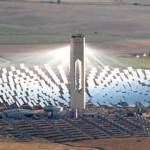
Solar power towers are the big daddy of all the different types of concentrating solar collectors. Solar towers uses hundreds if not thousands of small sun tracking mirrored solar dish collectors, called heliostats, to reflect the suns rays directly onto a centrally located heat absorbing receiver. As these heliostat mirrors concentrate the sun light energy on a very small area at the top of the tower. The concentrated radiant energy is then converted into heat using a heat exchanger which transfers the immense temperature generated into a transfer fluid such as oil, molten salt or super heated steam for electrical energy generation.
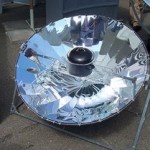
Solar dish collectors are parabolic shaped concentrators very similar in appearance to large satellite TV or radar dish making it much smaller than the longer trough collector. The curved parabolic shaped dish makes use of the direct solar radiation for heating at its focal point and is the main solar component for this type of solar heating system. Concentrated solar power technologies using parabolic dish collectors are perfectly suited for generating high temperatures for applications where extreme heat is required as other renewable energy systems are not able to create such high temperatures.

Parabolic trough reflectors concentrate the suns solar radiation to increase the efficiency of a solar thermal system. Solar energy can be too diffused and not very dense resource so it is sometimes necessary to concentrate the suns rays to produce high enough temperatures which can then be used for the production of hot water or a working fluid for electrical energy generation. Parabolic trough based solar systems are a type of solar concentrator which have a parabolic curve and are placed together in a straight line to maximise their effectiveness.
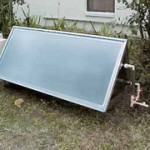
Integral collector storage systems use large diameter heat tubes inside an insulated and glazed box collector combined with a storage tank as a single thermal unit thus acting as both a collector and storage unit. Passive integral collector storage ICS systems used for solar water heating requires no pumps, controls, or electrical energy consumption for its normal operation thus can can potentially heat water at a much lower cost then conventional active solar thermal heating systems.
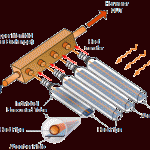
Evacuated tube collectors use advances in vacuum technology to heat liquids to high temperaters within a glass tube. The thermal performance of evacuated tube collectors is more superior to other more common solar therml technologies such as flat plate collectors and solar troughs. As solar conditions vary throughout the year depending on time and location, the presence of a vacuum between the absorber plate and the outer glass tube results in a substantial improvement in the solar collectors efficiency due to reduction in heat loss through convection and conduction.
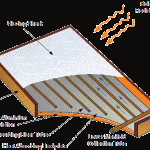
Flat plate collectors absorb the suns solar radiation, converts it into heat using a thermally sensitive absorbing surface, then transfers this absorbed heat to a moving medium such as air or water which is flowing through the solar collector. The resulting solar thermal energy converted by a flat plate collector can be used in solar hot water heating systems, solar pool heaters, and solar space-heating systems making flat plate collectors a major component in many solar heating systems.
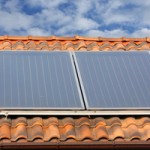
Solar thermal energy uses the suns energy to heat water or other such liquids, providing lots of solar hot water and space heating for the home making it a viable solution for a future renewable energy system. The solar thermal potential of the sun as a continuous heat source makes it an excellent choice for powering alternative energy systems thus reducing the consumption of fossil fuel energy sources and renewable energy fuels such as biomass. Then solar thermal energy technologies have the potential to be a major contributor to the global energy supply